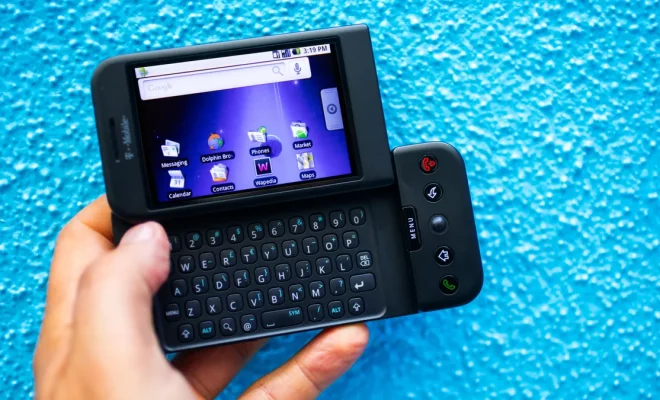15 Years of Android: Comparing the Newest Android Phone to the First

Fifteen years have passed since Android was first introduced to the world, and oh, what a journey it has been! The progression from the first Android smartphone, the HTC Dream (also known as the T-Mobile G1 in the US), to the latest offerings in the Android market, exemplifies not just technological evolution but also showcases changing consumer demands and industry innovation.
The HTC Dream, launched in 2008, was a revelation with its 3.2-inch HVGA display, sliding keyboard, and a mere 192MB of RAM accompanied by 256MB of storage. In comparison, today’s premium Android phones boast display sizes exceeding 6 inches with high refresh rates and resolution reaching 4K in some cases. RAM is no longer measured in mere megabytes – we’re into the realms of 8GB-16GB as standard for flagship models. Storage options regularly start at 128GB and extend up to 1TB – a staggering increase that highlights the data-centric world we now live in.
Battery life has seen equally impressive advancements. The first Android phone had a modest 1150mAh battery while contemporary models frequently sport batteries exceeding 4000mAh, replete with rapid charging and even wireless charging capabilities.
The software experience has been transformed over these years. The G1 debuted with Android 1.0 which lacked the finesse or functionality one might expect from a modern operating system; there wasn’t even an on-screen keyboard initially! Fast forward to today, where we interact with Android 12 or newer iterations furnished with machine learning features, comprehensive privacy controls, and seamless integration across devices and services.
Perhaps one of the most striking comparisons lies in camera technology. In 2008, having a mobile device with a 3.2-megapixel rear camera was impressive; now users enjoy multi-lens setups on their smartphones with sensors surpassing 108 megapixels occasionally combined with advanced features like optical image stabilization, laser autofocus, and computational photography that can rival traditional cameras.
The app ecosystem was nascent during the HTC Dream’s time — the Google Play Store (then called ‘Android Market’) hosted around 50 apps at launch. Presently, it accommodates millions of apps covering every conceivable need and interest.
In conclusion, reflecting on how far Android has come since the HTC Dream is like opening a time capsule of digital history. Moving from physical keyboards to full-screen displays and modest beginnings to intricate ecosystems demonstrates not only immense progress but also sets our expectations soaring for what another fifteen years could bring to mobile technology innovation.






